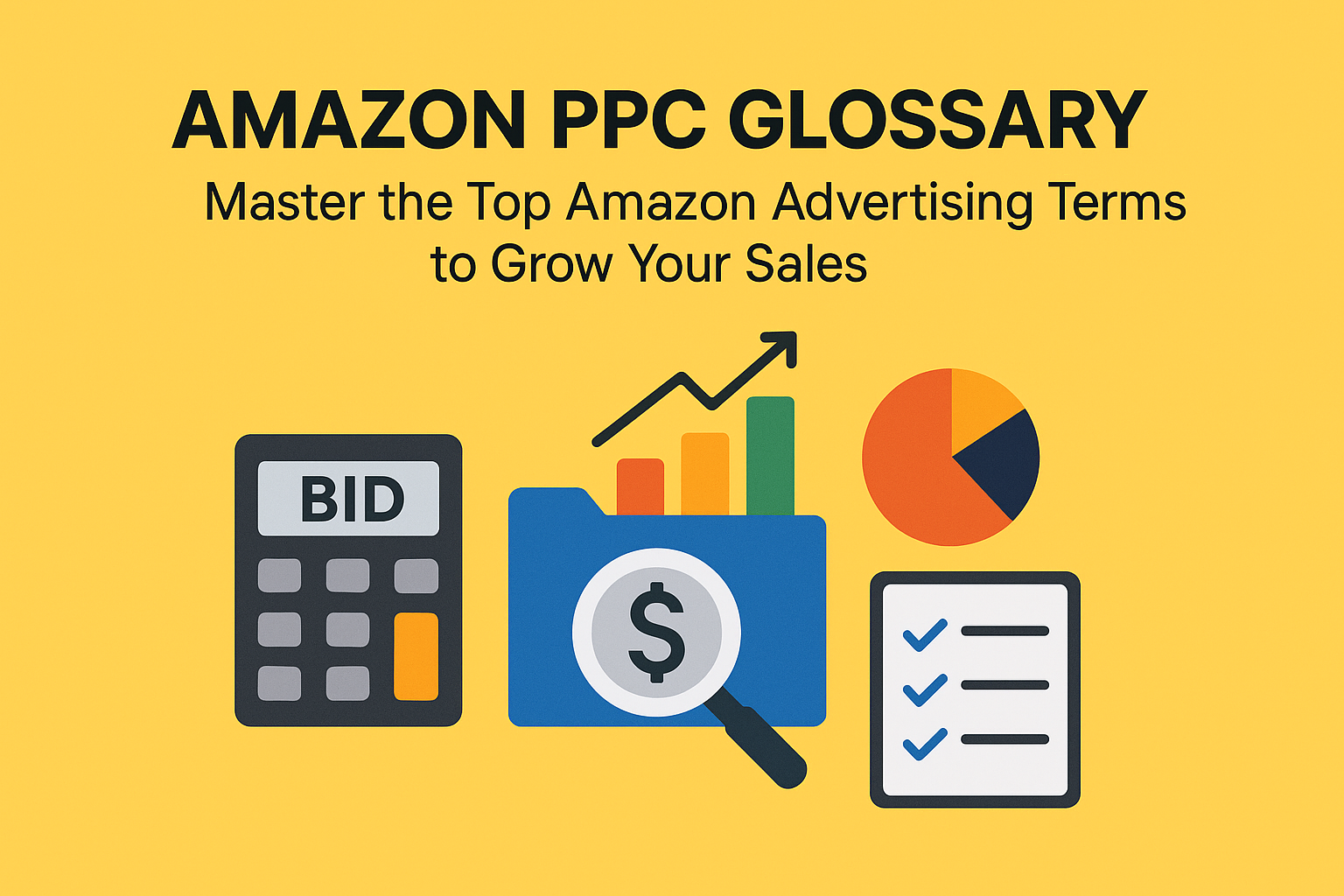
If you’re advertising on Amazon but don’t fully understand the terminology, you’re not alone. Many sellers struggle to make sense of the Amazon PPC terms that impact their campaigns.
This Amazon PPC glossary explains the most important advertising metrics and concepts—so you can make smarter decisions, increase ROI, and grow your business.
Whether you’re new to Amazon advertising or optimizing your campaigns, this keyword-rich PPC glossary will help you get ahead of the competition.
Amazon advertising is filled with acronyms, metrics, and performance data. If you don’t understand what those terms mean, you’ll struggle to:
This guide to Amazon advertising terms gives you the clarity you need to run profitable campaigns in Amazon’s competitive ecosystem.
Definition: The ratio of ad spend to ad revenue.
Formula: Ad Spend ÷ Ad Sales
Why it matters: ACoS tells you how much you’re spending to make each dollar in ad sales.
SEO Tip: Monitor ACoS closely to determine ad efficiency.
Definition: The percentage of ad spend in relation to total revenue (including organic sales).
Why it matters: TACoS reveals how your ads impact your overall Amazon sales performance.
Pro Tip: A rising TACoS indicates poor organic lift—review keyword targeting.
Definition: The percentage of people who saw your ad and clicked on it.
Formula: Clicks ÷ Impressions
Why it matters: CTR reflects how compelling your ad is.
SEO Insight: Low CTR may signal weak ad copy or irrelevant targeting.
Definition: The percentage of clicks that turn into sales.
Formula: Sales ÷ Clicks
Why it matters: CVR shows how well your listing converts shoppers.
Optimization Tip: Improve CVR with stronger product images and bullet points.
Definition: The total number of times your ad was displayed on Amazon.
Why it matters: High impressions with low CTR or CVR means wasted ad spend.
PPC Insight: Reevaluate targeting and match type if impressions aren’t converting.
Why it matters: Reviewing search term reports helps you refine targeting.
SEO Strategy: Add irrelevant search terms as negative keywords.
Definition: Words or phrases you exclude from your campaigns to prevent irrelevant clicks.
Why it matters: Negative keywords reduce wasted spend and improve targeting accuracy.
Example: Exclude “free” if you sell premium-priced products.
Why it matters: Match types impact visibility and relevance.
PPC Best Practice: Test all match types and optimize based on performance.
Why it matters: Each campaign type reaches a different stage in the buyer journey.
Optimization Tip: Diversify your campaign types to capture more traffic.
Definition: Amazon automatically increases or decreases your bids based on the likelihood of conversion.
Why it matters: Dynamic bidding improves efficiency by adjusting your bids in real time.
Pro Strategy: Use AI tools like Bidventor to automate this process and increase ROI.
Now that you know the key Amazon advertising terms, it’s time to apply them.
Here’s how to leverage this Amazon PPC glossary to improve performance:
Managing PPC campaigns manually can be time-consuming and error-prone. That’s where Bidventor comes in.
Bidventor is an AI-powered Amazon PPC optimization tool that:
Bidventor helps sellers win the Amazon advertising game by doing the heavy lifting—so you can focus on scaling your brand.
Understanding Amazon PPC terms is critical to success. This Amazon PPC glossary gives you the foundation to run smarter ads and optimize campaigns effectively.
By mastering these terms and pairing them with automation tools like Bidventor, you can:
Start applying these Amazon PPC terms today—and let Bidventor turn your knowledge into profit.
👉 Try Bidventor Now – Your All-in-One Amazon PPC Automation Tool
Connect your Amazon account or upload a bulk file. BIDVENTOR's AI will optimize your bids, cut wasted spend, and boost ROAS.
Content creator and writer passionate about sharing knowledge and insights through engaging articles.